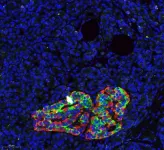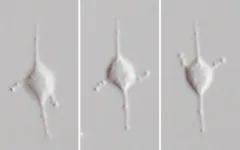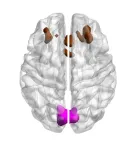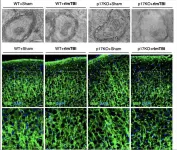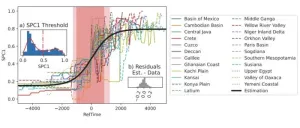Baseline findings among hospitalized mucormycosis patients —— A multicentric ambispective cohort study in India
2024-02-06
(Press-News.org)
Mucormycosis is a relatively rare but serious fungal infection increasingly recognised for its poor prognosis and high mortality. Due to the COVID-19 pandemic, the incidence of mucormycosis reached high levels during 2021–2022 in India.
This study led by Dr. Rizwan Suliankatchi Abdulkader (Indian Council of Medical Research) established a multicentric ambispective cohort of patients hospitalised with mucormycosis across India and reported their baseline profile, clinical characteristics, and outcomes at discharge.
Mucormycosis was diagnosed based on mycological confirmation on direct microscopy (KOH/Calcofluor white stain), culture, histopathology, or supportive evidence from endoscopy or imaging. After consent (NIE/IHEC/202107-02), trained data collectors used medical records and telephonic interviews to capture data in a pre-tested structured questionnaire. At baseline, we recruited 686 patients from 26 study hospitals, of whom 72.3% were males, 78% had a prior history of diabetes, 53.2% had a history of corticosteroid treatment, and 80% were associated with COVID-19. Pain, numbness, or swelling of the face were the commonest symptoms (73.3%). Liposomal Amphotericin B was the most common drug formulation used (67.1%), and endoscopic sinus surgery was the most common surgical procedure (73.6%). At discharge, the disease was stable in 43.3%, in regression for 29.9% but 9.6% died during hospitalization. Among survivors, commonly reported disabilities included facial disfigurement (18.4%) and difficulties in chewing/swallowing (17.8%). Though the risk of mortality was only 1 in 10, the disability due to the disease was very high.
“The study enhances our understanding of the disease, which could be applied to draw greater policy attention to the problem and develop effective public health strategies. The findings of this inquiry could guide clinicians in devising standard treatment protocols and strategies and identification of risk factors for mortality” Dr. Rizwan Suliankatchi Abdulkader said.
See the article: Baseline findings of a multicentric ambispective cohort study (2021-2022) among hospitalised mucormycosis patients in India
https://www.tandfonline.com/doi/full/10.1080/21501203.2023.2271928
END
[Attachments] See images for this press release:
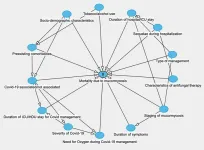
ELSE PRESS RELEASES FROM THIS DATE:
2024-02-06
Research introduces new DNA methylation-based method for accurately assessing cell composition in the human pancreas, addressing a critical gap in diabetes research. By overcoming limitations of traditional protein marker-based approaches, the study provides a more precise means to identify specific cell types. The findings offer insights into beta-cell dysfunction across diabetes types and have direct clinical implications, enhancing our understanding of diabetes development and potentially guiding more tailored treatment ...
2024-02-06
Tsukuba, Japan—Meteora sporadica is a small, unicellular eukaryote (protist) that was discovered in deep Mediterranean sea sediments in 2002. It differs from known protists by the presence of two lateral arms that swing back and forth. However, the ultrastructure and phylogenetic position of M. sporadica remain unknown.
In this study, researchers successfully cultured and analyzed two strains of M. sporadica from marine sediments in detail. Ultratructural observations revealed ...
2024-02-06
Tsukuba, Japan—Leguminous plants have a mechanism (rhizobial symbiosis) to efficiently acquire nitrogen, which is an essential macronutrient for growth, through the nitrogen-fixing bacteria rhizobia. Root nodules are organs on plant roots that facilitate the symbiotic relationship. Rhizobia coloniza these nodules and fix nitrogen by converting nitrogen from air into ammonia. Iron is needed for the enzymes that catalyze nitrogen fixation; however, where and how iron is transported to the nodule and used for nitrogen fixation is largely unknown.
In this study, using the legume model plant Lotus japonicus, a transcriptome ...
2024-02-06
PHOENIX, Feb. 6, 2024 – Eleven scientists leading the way in stroke research will be recognized during the American Stroke Association’s International Stroke Conference 2024 for their exceptional professional achievements. The meeting will be held in Phoenix, Feb. 7-9, and is a world premier meeting for researchers and clinicians dedicated to the science of stroke and brain health.
The illustrious group of awardees includes four groundbreaking scientists who have devoted their careers to stroke research and six scientists will be recognized for their notable new research. The awards include the Ralph L. Sacco Outstanding Stroke Research ...
2024-02-06
While wind farms have become a widely popular method of generating energy, researchers are now looking at the impact of these large farms on wind patterns and the surrounding environment.
Using large-scale simulations to better understand the way air moves across and within wind farms, researchers from UBC Okanagan and Delft University of Technology (TU Delft) in the Netherlands have developed a modelling framework that will help improve wind energy forecasts and productivity.
The researchers also hope to learn how large wind farms can alter natural wind patterns.
“Wind farms are getting so large that ...
2024-02-06
Be front and center for the hottest research findings in the molecular life sciences at Discover BMB, the annual meeting of the American Society for Biochemistry and Molecular Biology, to be held March 23–26 in San Antonio.
Don’t miss this opportunity to hear from the top minds in the field. Reporters are invited to register for a complimentary press pass to attend #DiscoverBMB in San Antonio or access press materials electronically. Please note that only a limited number of complementary on-site press passes will be issued, so advance registration is recommended. Find more information in the #DiscoverBMB newsroom.
As part of an exciting program spotlighting the ...
2024-02-06
Scientists have found the strongest evidence yet that our brains can compensate for age-related deterioration by recruiting other areas to help with brain function and maintain cognitive performance.
As we age, our brain gradually atrophies, losing nerve cells and connections and this can lead to a decline in brain function. It’s not fully understood why some people appear to maintain better brain function than others, and how we can protect ourselves from cognitive decline.
A widely accepted notion is that some people’s brains are able to compensate ...
2024-02-06
LA JOLLA, CA—La Jolla Institute for Immunology (LJI) is working to guide the development of new tuberculosis vaccines and drug therapies.
Now a team of LJI scientists has uncovered important clues to how human T cells combat Mycobacterium tuberculosis, the bacterium that causes TB. Their findings were published recently in Nature Communications.
"This research gives us a better understanding of T cell responses to different stages in tuberculosis infection and helps us figure out is there are additional diagnostic ...
2024-02-06
Repeat concussions, also referred to as repetitive mild traumatic brain injury, can lead to chronic traumatic encephalopathy (CTE) and raise the risk of Alzheimer’s disease. However, some people who experience repetitive mild traumatic brain injury never develop major disease. Onder Albayram and colleagues investigated the role of a protein known as p17 in protecting brains from long-term pathologies. In stressed neurons, p17 initiates production of C18-Ceramide, a bioactive sphingolipid that acts as a label of damaged mitochondria in neuronal axons. Labelled mitochondria are then detected and removed by autophagosomes. The authors knocked out p17 in mice. Some p17-knockout ...
2024-02-06
Are cultural evolution rates similar across human societies? The emerging field of Cliodynamics uses mathematical models to study history. Tobias Wand and colleagues used a data-driven approach to estimate the rates of cultural evolution in 23 geographic areas, using data from Seshat: Global History Databank, which records nine “complexity characteristics” for 370 polities over 10,000 years, ending in the nineteenth century. The complexity characteristics are polity population; extent of polity territory; the size of the largest urban center; hierarchical complexity; the ...
LAST 30 PRESS RELEASES:
[Press-News.org] Baseline findings among hospitalized mucormycosis patients —— A multicentric ambispective cohort study in India

